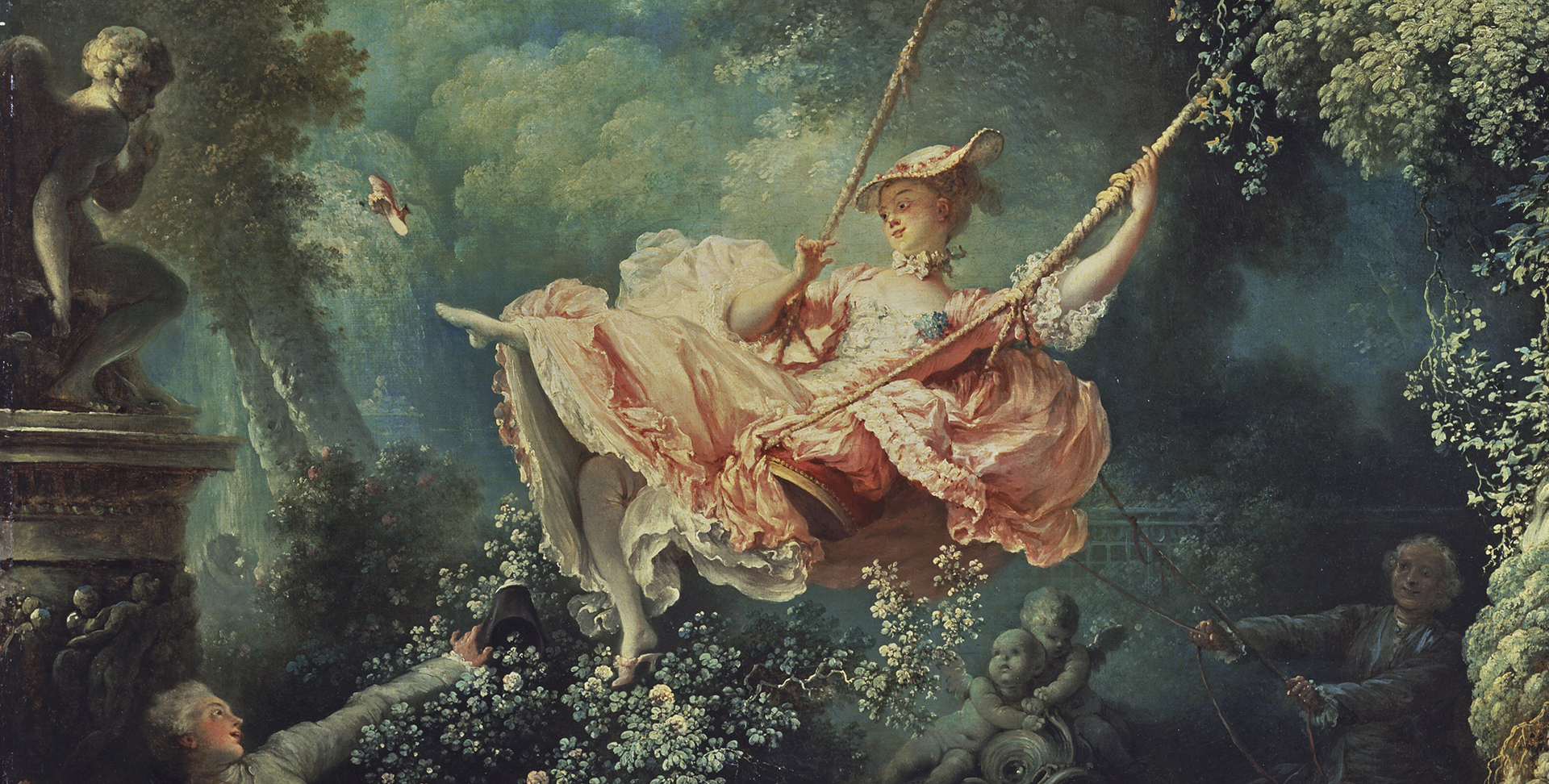

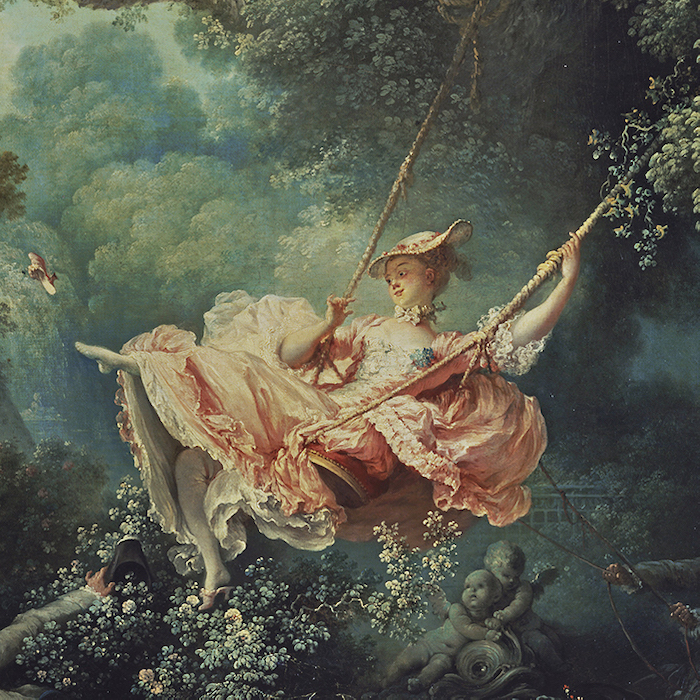
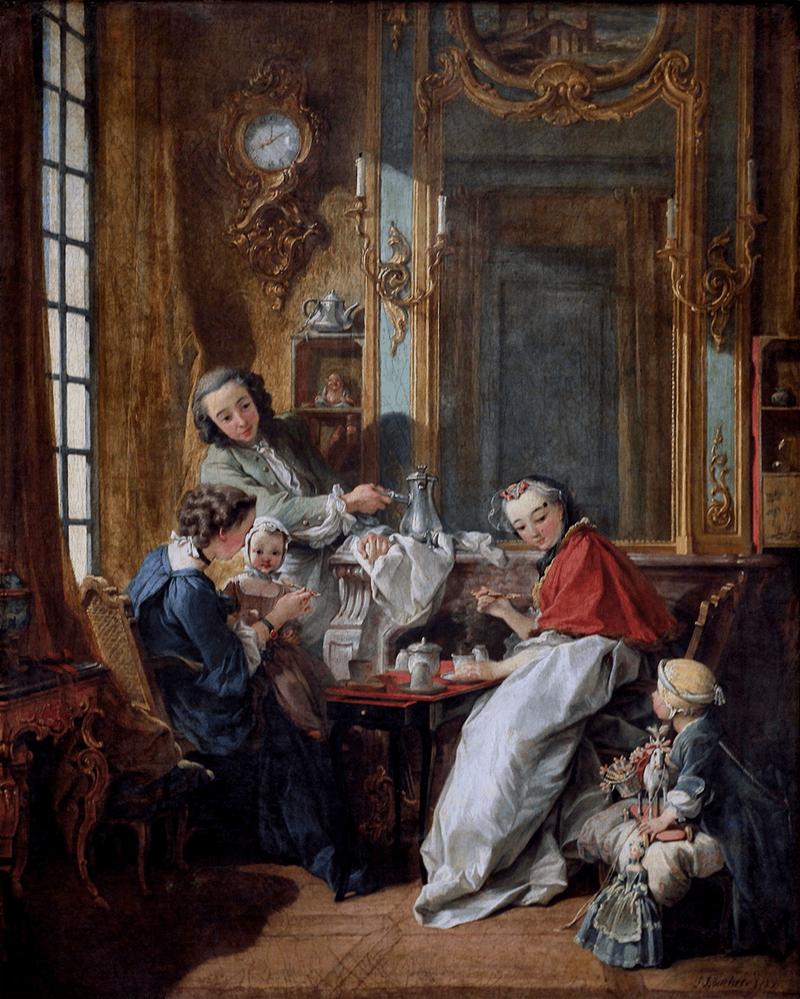
Society changed during the 18th century. From then on, the aristocracy dropped the idea of castles with grandiose decorations and badly heated rooms. They looked for more comfort, privacy and a lighter atmosphere.
Works of art echoed this:
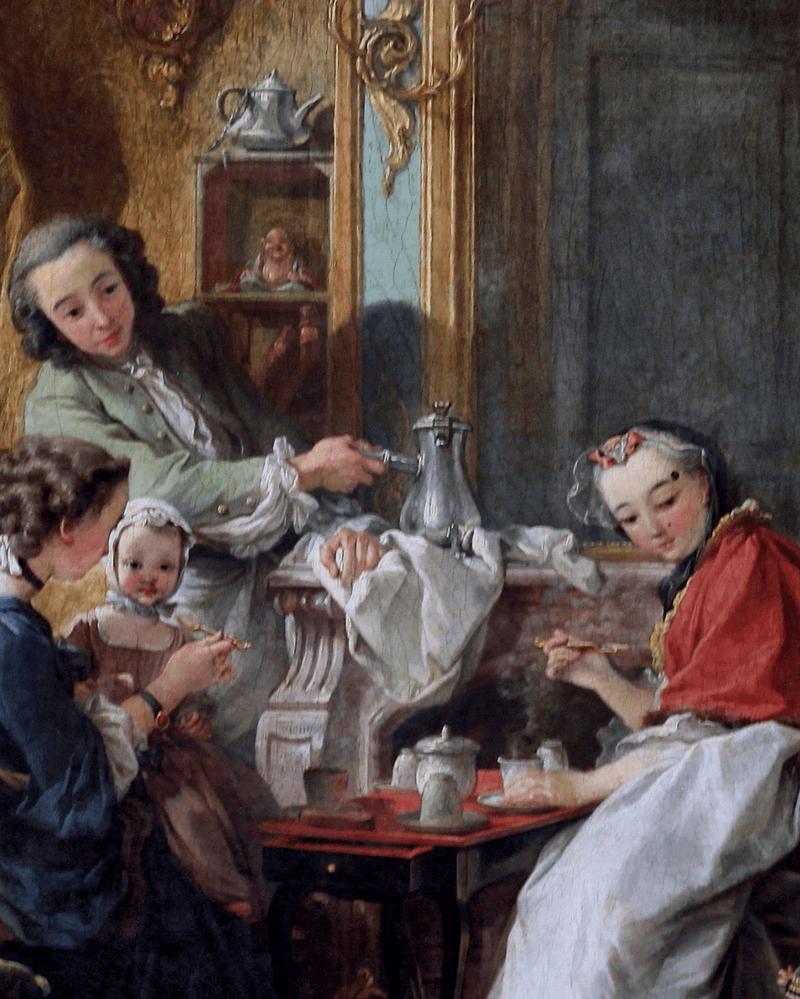
This family has been caught by surprise in an enjoyable close family moment, drinking chocolate or coffee.

This scene takes place in a small but refined interior, with some exotic objects from Asia.

The curves of the furniture are 100% rococo.

During the 18th century, the taste of the public changed, giving way to leisure scenes and “rococo” style.
At the beginning of the 18th century, a great many aristocrats were queuing up in front of a house in Paris. What for? To meet the famous artist Rosalba Carriera to ask her to paint their portrait.
Carriera drew crowds because of her pastel creations renowned across Europe. These little coloured sticks were greatly appreciated. Not only did they imitate textures (like dress satin), but their powdery appearance was charmingly attractive.
The technique existed before Carriera but it was during her time that it acquired its reputation, to such an extent that this was not a “flash-in-the-pan”.


Pastel works like those of Rosalba Carriera were very successful during the 18th century.

Artists now had regular exhibitions to help them acquire a reputation. They provided the opportunity of revealing their latest creations and finding clients.
In their wake were born…
It should be noted that it was during this period that the first auctioneers began to operate. They still exist today!

The 18th century saw the birth of the art market with its galleries, critics and auctioneers.
Artists now started leaning towards the decorative arts. Boucher, the painter, for example, provided models for the creation of tapestries or porcelain works.
In France, these luxury objects were made in royal workshops. These “enterprises”, founded during the previous century, obtained strong support from the monarchy. This was a successful business undertaking between their subsidies and the talented artists at their service.
In tapestry, painters provided the “cartoons”. These paintings were then copied on the same scale by the “weaver” (the tapestry artist).

Artists provided models for the decorative arts created in the royal workshops.
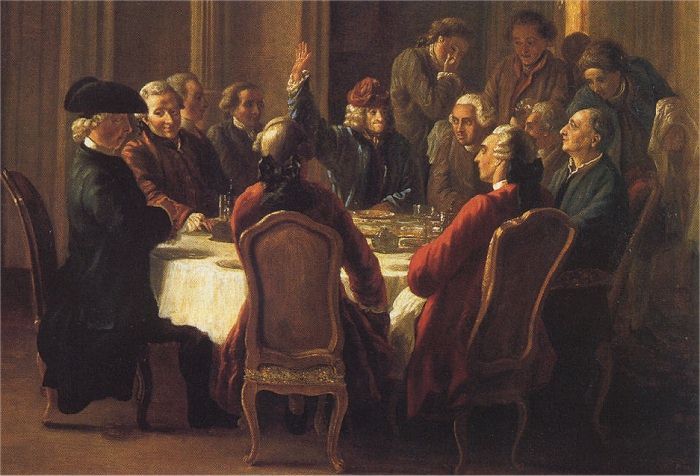
When it comes to ideas, the 18th century was bubbling with them.
A new cultural school of thought brought together thinkers throughout Europe, even influencing America – the “Enlightenment”.
These thinkers defended principles such as:
They were supported by important personalities, down to the French king’s favourite, or at least that is what Madame de Pompadour declared loud and clear in her portrait.
The Marquess owned a great many books, kept in her library, including those of thinkers Montesquieu, Voltaire and the Encyclopedia by Diderot and d’Alembert.

Enlightenment thinkers defended education and the supremacy of reason and believed in the progress of humanity.
The 18th century was also the time when an institution that would enjoy great success appeared: the museum.
It’s clear that rich collectors with vast collections were not a recent phenomenon, but from now onwards, some of them, even the kings, decided to open these private studios to the public!
Why did they do this?

Museums, which appeared during the 18th century, were an inspiration for artists and were a means of educating the public in their viewing of art.
There were a considerable number of prominent rococo artists at the beginning of the 18th century. Discover the names of some of them:
After 1760, the world was on the point of changing once again. England was becoming more important, whilst real artistic and political revolutions were taking place, but that’s another story!

Rococo artists met with great success throughout Europe right up until the 1760s.

"*" indicates required fields